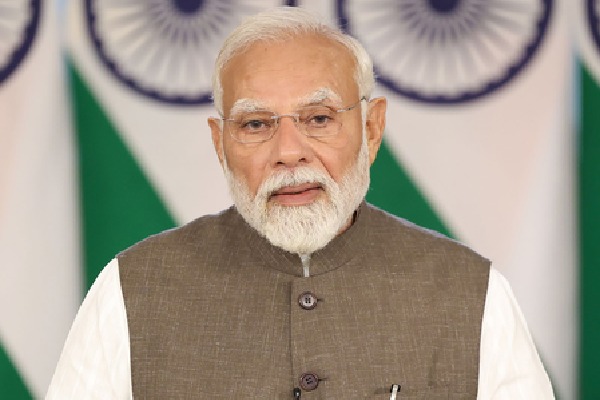With GST reforms kicking in alongside the Navratri season, prices of essentials are falling — a welcome boost to household budgets across India.

GST Bachat Utsav Begins: A Festival of Savings for Households
Prime Minister Narendra Modi has announced the launch of GST Bachat Utsav (GST Savings Festival) beginning 22 September 2025, coinciding with the start of Navratri. The sweeping GST reforms under “GST 2.0” are expected to reduce the tax burden on many goods and help put more money back in the pockets of ordinary citizens.
The government frames this move as a “double bonanza” — combining recent income-tax relief (especially for the middle class) with these GST rate reductions. The reforms aim to make essentials more affordable and boost disposable incomes.
What Has Changed — Lower Taxes, Simpler Structure
Here are some key changes introduced under GST 2.0:
- The earlier multiple GST slabs have been simplified. The new structure largely consists of two main rates: 5% and 18% for most goods and services.
- Goods that were earlier taxed at 12% are now mostly under 5%. Similarly, many items from 28% slab have moved down to 18%.
- Ultra-luxury and “sin” goods (like certain high-end items, tobacco, etc.), and products like aerated sugary beverages, will have higher taxation or remain under higher slabs.
- Some categories are now exempt or have zero tax — including life insurance, health insurance, some essential medicines, diagnostic kits, and medical and veterinary devices.
How This Boosts Household Budgets
The GST savings festival is meant to translate into real financial relief for families. Here’s how ordinary households are expected to benefit:
- Cheaper daily essentials: Lower GST on staples (like food items, toiletries, hygiene products) means grocery bills and daily consumption costs drop.
- More disposable income: Middle-class families, especially those whose income fell under the tax-relief threshold earlier this year, will see savings both from income tax reforms and now from GST rate cuts. This “double bonanza” improves purchasing power.
- Boost for larger purchases: Many consumer durables (like TVs, refrigerators), vehicles, and other bigger-ticket items will cost less because GST has come down for them or other taxes/cesses have been modified or removed.
- Support for “neo-middle class” and marginal households: Modi’s speech emphasises that poor, women, farmers, youth, MSMEs (small businesses) will benefit. For households closer to the margin, even modest reductions in the cost of essentials make a visible difference.
- Stimulus for consumption: With goods being more affordable, spending is likely to increase, especially during the festive season — which may also help small retailers and manufacturers. This in turn could help with employment, local economic growth.
Challenges and Things to Watch
While the GST reforms are broadly welcomed, there are some caveats and things households should watch out for:
- Passing on the benefit: It is essential that producers, distributors, and retailers pass the GST cuts through in actual prices, rather than retaining margins.
- Goods that may become more expensive: Items in the luxury, sin, or ultra-luxury categories may see higher taxes under the revised slabs, so for some consumers the cost might go up.
- Regional variations: Prices and shops may adjust differently in different states, depending also on how local suppliers and logistics costs respond. Households in remote or high-transport-cost areas may see less dramatic reductions.
- Awareness and implementation: For the reforms to be effective, consumers need to be aware of which products are taxed lower, and regulatory oversight is needed to ensure fair implementation. State governments and market sellers play a key role.
What This Means Going Forward
The “GST Bachat Utsav” is more than just a price cut — it’s part of a larger push by the government for a self-reliant (Atmanirbhar) India, promoting Swadeshi (made-in-India) goods, simplifying taxation, and easing compliance for businesses.
For households, this could mean:
- More choices in purchases: With lower taxes, products that were earlier expensive might come within reach.
- Opportunity to save or spend: Reduced essential expenditure may free up some income for savings, investments, or discretionary spending.
- Better financial planning: With predictable taxation, less surprise in MRP increases or hidden tax burdens.
In the festive season ahead, these reforms might also help revive demand, boost trade, and strengthen small business earnings. The government expects that the twin reforms (income tax relief + GST cuts) will result in ₹2.5 lakh crore of savings for people over a year.
GST Bachat Utsav marks an important moment: when tax policy aligns with relief for ordinary people. Lower GST rates, simplified slabs, and strategic exemptions combine to make life a bit easier, especially in a time of inflation and rising costs. For households across India, this should translate into more affordable essentials, more savings, and greater spending power — just in time for Navratri and the festive season.
READ ALSO…….PM Modi Travels by Car to Churachandpur as Rain Grounds Helicopter in Manipur 2025















 Categories
Categories









